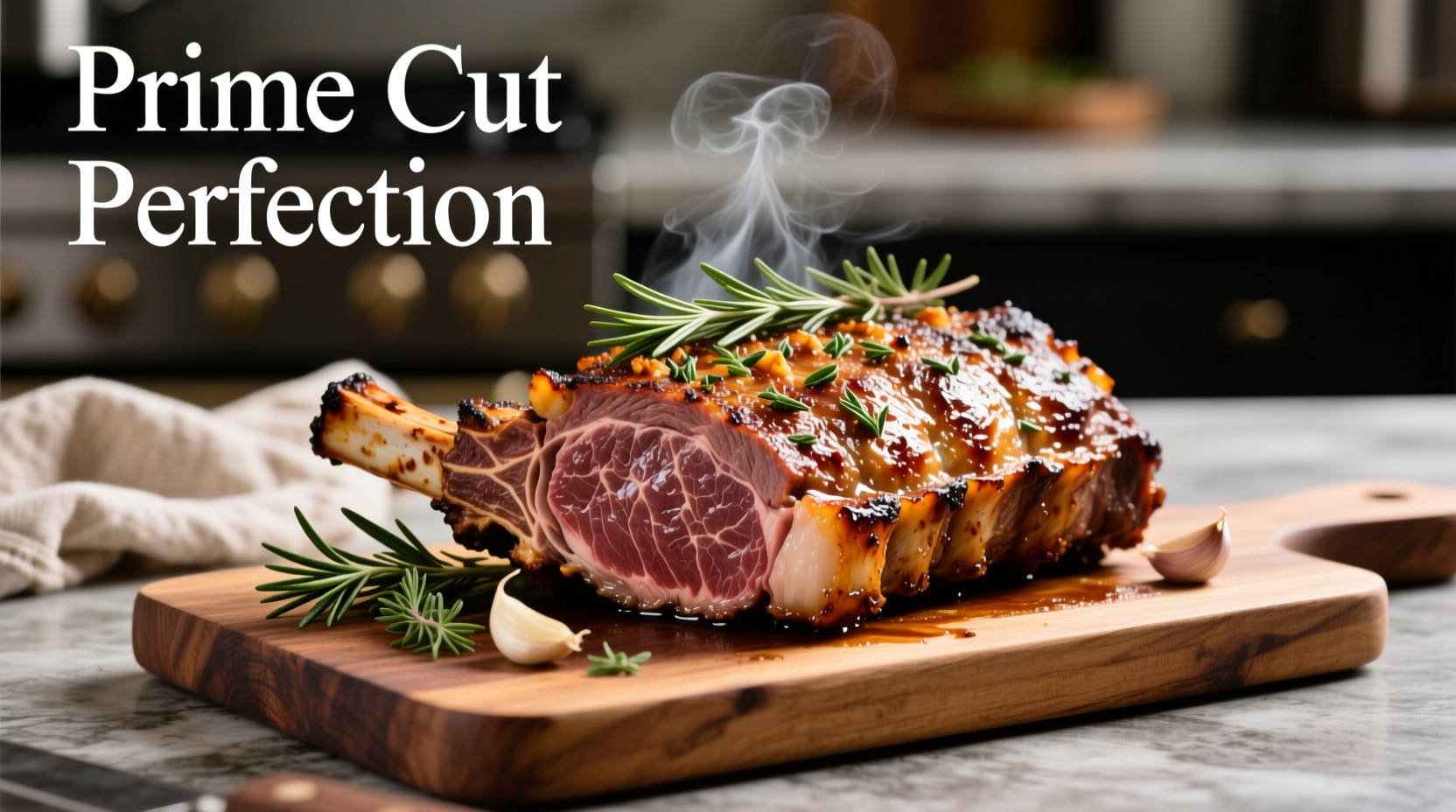Perfectly cooked small prime rib requires precise temperature control, proper seasoning, and adequate resting time. For a 3-5 pound cut, roast at 225°F until internal temperature reaches 115°F for rare (12-15 minutes per pound), then rest 30-45 minutes before carving. This method ensures tender, juicy meat with a beautiful pink center and flavorful crust.
Mastering Small Prime Rib: Your Complete Cooking Guide
Nothing impresses guests like a perfectly cooked prime rib, but many home cooks struggle with smaller cuts. Unlike larger roasts, small prime ribs (3-5 pounds) require careful attention to prevent overcooking. After decades of culinary experience, I've perfected a foolproof method that delivers restaurant-quality results every time. This guide covers everything from selection to carving, so you'll never serve dry, overcooked beef again.
Why Small Prime Rib Demands Special Attention
Small prime ribs present unique challenges compared to their larger counterparts. With less mass, they heat up faster and can easily overshoot your target temperature during resting. The USDA Food Safety and Inspection Service confirms that smaller cuts require more precise temperature monitoring to achieve food safety while maintaining optimal doneness. Understanding these dynamics is crucial for success.
Essential Tools for Prime Rib Perfection
- Instant-read thermometer (critical for small cuts)
- Oven-safe meat thermometer (for continuous monitoring)
- Rack for roasting pan
- Sharp carving knife
- Meat fork (never use tongs on prime rib)
- Heavy-bottomed roasting pan
Selecting Your Small Prime Rib
For best results, choose a 3-5 pound bone-in prime rib roast with even marbling throughout. The bone helps insulate the meat during cooking, preventing the edges from overcooking. Look for bright red meat with creamy white fat - yellowing indicates age. According to the American Association of Meat Processors, prime grade offers the best marbling for this cut, but choice grade works well with proper technique.

Step-by-Step Cooking Process
Preparation (24 Hours Before Cooking)
Remove packaging and place roast on a wire rack over a tray in your refrigerator, uncovered. This dry-brining process seasons the meat deeply and creates a superior crust. Pat dry with paper towels before seasoning.
Seasoning (1-2 Hours Before Cooking)
Combine 2 tablespoons coarse salt, 1 tablespoon freshly ground black pepper, 2 teaspoons garlic powder, and 1 tablespoon chopped fresh rosemary. Rub evenly over all surfaces. Let sit at room temperature for 60-90 minutes before cooking - this ensures even cooking.
Cooking Timeline and Temperature Guide
| Weight | Oven Temp | Target Internal Temp | Approx. Cooking Time | Resting Time |
|---|---|---|---|---|
| 3 lbs | 225°F | 115°F (rare) | 35-45 minutes | 30 minutes |
| 4 lbs | 225°F | 115°F (rare) | 45-55 minutes | 35 minutes |
| 5 lbs | 225°F | 115°F (rare) | 55-65 minutes | 40 minutes |
Place roast fat-side up on a rack in your roasting pan. Insert oven-safe thermometer into the thickest part, avoiding bone. Roast at 225°F until internal temperature reaches 115°F for rare (about 12-15 minutes per pound). The low temperature ensures even cooking from edge to center.
Resting: The Critical Step Many Skip
Transfer roast to a cutting board, tent loosely with foil, and rest for 30-45 minutes. During this time, the internal temperature will rise 5-10°F (carryover cooking) to your perfect doneness. This resting period allows juices to redistribute throughout the meat. Skipping this step causes precious juices to spill out when carving, resulting in dry meat.
Carving Like a Professional
Remove bones by slicing along the bone line, then carve against the grain into 1/2-inch thick slices. For presentation, arrange slices standing upright. The American Culinary Federation recommends using a long, sharp carving knife with minimal sawing motion to preserve juice retention.
Common Mistakes That Ruin Small Prime Rib
- Not using a thermometer: Guessing doneness leads to overcooked meat
- Cooking at too high temperature: Causes uneven cooking in small cuts
- Cutting too soon: Resting is non-negotiable for juicy results
- Seasoning too late: Dry-brining overnight makes a significant difference
- Ignoring carryover cooking: Remove from oven 5-10°F below target temperature
Serving Suggestions for Your Perfect Prime Rib
Pair with classic horseradish cream sauce, roasted garlic mashed potatoes, and seasonal vegetables. For wine pairings, a full-bodied Cabernet Sauvignon complements the rich beef flavors. Leftovers make exceptional beef sandwiches or hash the next day - just avoid reheating in the microwave, which dries out the meat.
Alternative Cooking Methods
While the low-and-slow oven method works best for beginners, experienced cooks might try:
- Reverse sear: Finish with 5 minutes at 500°F for extra crust
- Grill method: Indirect heat at 225°F with wood chunks for smoky flavor
- Sous vide: 130°F for 4-6 hours followed by quick sear (requires precision)
Remember that small prime ribs cook faster on grills and require careful monitoring to prevent overcooking.
Storage and Reheating Tips
Store leftovers in an airtight container in the refrigerator for up to 4 days. For best reheating results, place slices in a covered dish with a splash of beef broth and warm gently at 250°F until heated through. This preserves moisture better than microwave reheating.











 浙公网安备
33010002000092号
浙公网安备
33010002000092号 浙B2-20120091-4
浙B2-20120091-4